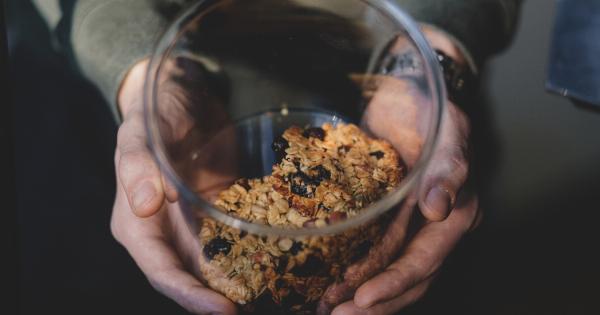Do you find yourself constantly struggling with food cravings? Are you always reaching for sugary snacks or salty treats, even when you know they’re not good for you? If so, you may be caught in the 12-day food addiction cycle.
What is the 12-Day Food Addiction Cycle?
The 12-day food addiction cycle refers to the habit many people have of falling into a pattern of eating unhealthy foods every two weeks. This cycle is thought to be caused by a combination of biological, psychological, and social factors.
How Does the 12-Day Food Addiction Cycle Work?
The 12-day food addiction cycle works like this:.
- Days 1-3: You start out eating healthily, feeling good about your choices and your progress towards your health goals.
- Days 4-6: You begin to feel some cravings for unhealthy foods, but you’re still able to resist them and stick to your healthy eating plan.
- Days 7-9: Your cravings start to intensify, and you may begin to give in to them. You might have a small indulgence or two, but you try to keep it under control.
- Days 10-12: Your cravings are at their peak. You’re finding it hard to resist unhealthy foods, and you may be indulging in them more frequently and in larger quantities.
- Days 13-15: You start to feel guilty about your food choices and the amount you’ve been indulging. You may try to reign in your eating and get back on track with healthy choices.
What Causes the 12-Day Food Addiction Cycle?
There are several factors that can contribute to the 12-day food addiction cycle:.
Biology
Research has shown that certain foods can trigger the release of dopamine in the brain. Dopamine is a neurotransmitter that is associated with pleasure and reward.
When you eat foods that trigger dopamine release, your brain becomes conditioned to associate those foods with pleasure, making it more likely that you’ll continue to crave them.
Psychology
Emotional factors can also contribute to the 12-day food addiction cycle. Stress, anxiety, and depression can all trigger cravings for comfort foods, such as sugary or fatty treats.
Social Factors
The people around you can also influence your food choices. If your friends or family members frequently indulge in unhealthy foods, you may be more likely to do the same, even if you don’t want to.
Breaking the 12-Day Food Addiction Cycle
If you’re caught in the 12-day food addiction cycle, there are several things you can do to break free:.
1. Identify Your Triggers
Pay attention to what triggers your cravings for unhealthy foods. Is it stress? Boredom? Social pressures? Identifying your triggers can help you find healthier ways to cope with them.
2. Plan Ahead
When you know you’ll be facing temptation, plan ahead. Bring healthy snacks with you when you go out, or prepare healthy meals in advance so that you’re not tempted to grab something unhealthy on the go.
3. Surround Yourself with Supportive People
Surround yourself with people who share your commitment to healthy eating. Join a support group, or enlist the help of friends and family members who will encourage and support you in your goals.
4. Practice Mindful Eating
When you’re eating, be present in the moment. Savor the flavors and textures of your food, and pay attention to how your body feels as you eat.
This can help you eat more slowly and mindfully, reducing the likelihood that you’ll overeat or turn to unhealthy foods.
5. Consider Professional Help
If you’re really struggling with food addiction, consider seeking help from a professional.
A therapist or nutritionist can help you address the underlying emotional and psychological issues that are contributing to your addiction, and can help you develop a plan for achieving and maintaining healthy eating habits.
Conclusion
Breaking free from the 12-day food addiction cycle can be challenging, but it’s not impossible.
By identifying your triggers, planning ahead, surrounding yourself with supportive people, practicing mindful eating, and seeking professional help if necessary, you can develop healthier eating habits and break the cycle of addiction for good.































